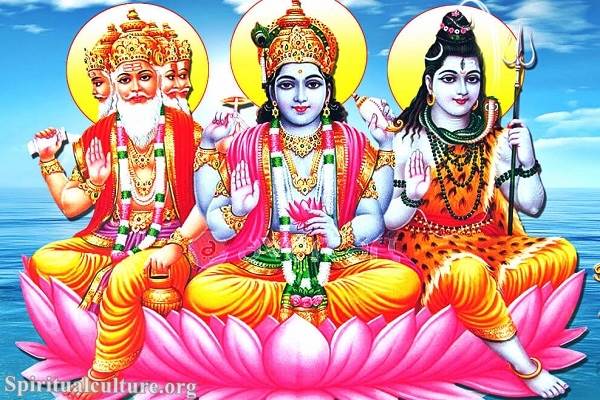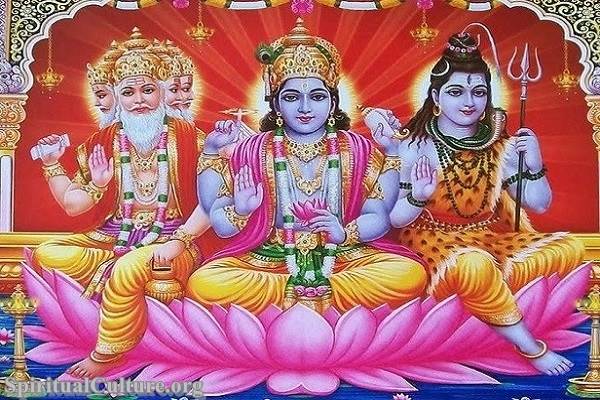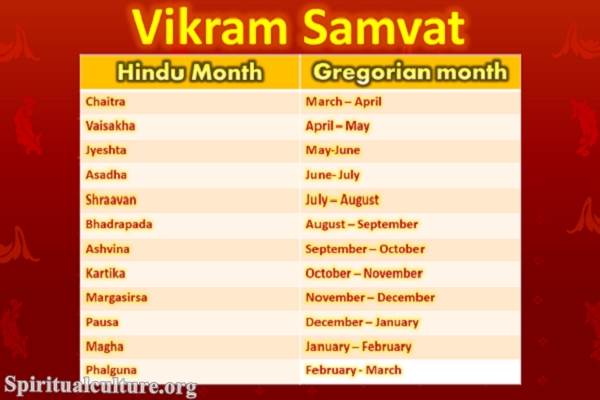In every tradition, sound carries more than information — it carries presence, mystery, and memory. But among the many sacred syllables, one rises as the primal vibration — the sound of creation itself. It is Om (also written Aum), a syllable so ancient, so rich with spiritual resonance, that it forms the heartbeat of countless chants, meditations, and mantras.
Om is not just a sound; it is a symbol, an experience, and a doorway to higher states of consciousness. From Hindu sages to Buddhist monks, from yogic masters to seekers in silence, the sacred syllable has been honored for millennia as the seed of the universe — a way to align body, mind, and soul with the divine rhythm.
In this article, Spiritual Culture invites you to explore the meaning, mystery, and meditative power of Om. Why is this syllable so revered? What does it truly represent? And how can its sound reshape your inner life?
Let us begin — not with words, but with vibration.
The Origin and Essence of Om
Om in the Vedas: The Primal Sound
The earliest known reference to Om appears in the Rig Veda, one of the oldest sacred texts in the world. There, Om is recognized not as a mere phoneme, but as the sound of the universe, the source from which all creation arises.
In the Mandukya Upanishad, an entire scripture is devoted to Om, proclaiming:
“Om is this imperishable word. Om is the universe, and this is the exposition of Om.”
It teaches that Om encompasses everything — the waking world, the dream world, and the world of deep sleep — as well as that which transcends all three.
The Syllable as Symbol: A-U-M
Om is often phonetically broken down into three parts:
- A (ah) — the beginning, creation, the waking state
- U (ooh) — the continuation, the dream state, the realm of subtle experience
- M (mmm) — the dissolution, deep sleep, the return to silence
Together, these sounds represent the cycle of life, consciousness, and reality. But the fourth part — the silence after the sound — is equally significant. It is the infinite, the unmanifested, the stillness behind all things.
The Spiritual Significance of Om
The Sound Beyond Meaning
Unlike words that describe things, Om is a sound that is the thing. It is not a pointer; it is a presence.
Om is sometimes referred to as Shabda Brahman — “Sound as the Absolute.” In this view, the divine does not merely create with sound — it is sound. All of creation vibrates with the subtle hum of Om, whether we hear it or not.
Om and the Cosmic Order
In Hindu cosmology, the universe is not made of matter alone but of vibration — and Om is the original vibration. The god Brahma, the creator, is said to have uttered Om, and from it, the cosmos unfurled.
This view is mirrored in other traditions:
- In Tibetan Buddhism, the mantra Om Mani Padme Hum begins with Om, linking compassion with cosmic sound.
- In Jainism, Om represents the five supreme beings.
- In Sikhism, the sacred syllable appears as Ik Onkar — “There is One Creator” — evoking unity through sound.
Everywhere it appears, Om signifies oneness, wholeness, and sacred order.
Om in Meditation Practice
Why Meditate with Om?
Meditating with Om is not about repeating a word; it is about tuning into the vibration beneath thought. This practice has many benefits:
- Calms the mind by creating a steady rhythm of attention
- Harmonizes the breath and body with sound
- Awakens deeper states of awareness, inviting a sense of inner spaciousness
- Connects the practitioner with a larger field of consciousness
When chanted with awareness, Om has the power to dissolve mental chatter and anchor the soul in stillness.
How to Chant Om Mindfully
Here is a simple guide to meditating with Om:
- Sit comfortably with your spine upright.
- Close your eyes and take a few slow, deep breaths.
- Inhale, and as you exhale, chant Om slowly:
- Start with A in the lower belly
- Move to U in the chest
- End with M in the head or third eye
- Allow the final mmm to fade into silence — and stay with the silence.
- Repeat for several minutes, or as long as feels nourishing.
Let Om rise from your breath, not your throat. Let it vibrate through your whole being.
Scientific Insights into Om Chanting
Sound and Brainwaves
Modern science has begun to catch up with ancient wisdom. Studies on Om chanting show that it:
- Activates the parasympathetic nervous system, reducing stress
- Enhances theta and alpha brainwave activity, linked to calm, creativity, and meditation
- May even influence vagal tone, improving emotional regulation and resilience
In short, Om alters consciousness — not through magic, but through vibration.
Resonance and Cellular Healing
Every cell in the body responds to vibration. Some researchers and sound therapists believe that chanting Om:
- Creates a gentle internal massage for organs
- Synchronizes brain-heart coherence
- May support immune function and emotional balance
Though more research is needed, the lived experience of many meditators supports these effects. Om is not merely “heard” — it is felt, lived, and absorbed.
Symbolism of the Om Icon (ॐ)
A Visual Mantra
The symbol for Om (ॐ) is a visual representation of the sound and its cosmic implications.
- The large lower curve represents the waking state (jagrat)
- The middle curve signifies the dream state (svapna)
- The upper curve is deep sleep (sushupti)
- The dot signifies the fourth state (turiya), beyond all experience
- The semi-circle beneath the dot stands for maya — illusion, which prevents us from reaching the highest truth
This symbol is not decorative — it is a map of consciousness.
Om in Yoga and Devotional Life
Bhakti and Jnana
In devotional (bhakti) practices, Om may precede or follow the name of God — such as Om Namah Shivaya or Om Namo Narayanaya — creating a bridge between the personal and the cosmic.
In path of knowledge (jnana), Om is meditated upon as pure awareness, pointing not toward a deity, but toward the formless truth.
Both approaches are valid — and both use Om to go beyond the ego.
Om in Community and Ritual
In group chanting or kirtan, Om opens and closes sacred space. It aligns everyone in shared resonance, creating a sense of spiritual unity.
In ritual, Om sanctifies objects, offerings, and intentions. It is the verbal consecration of the sacred.
Om and Inner Transformation
Letting Go Through Sound
To chant Om is to release. You let go of your identity, your noise, your striving. The syllable does not belong to any religion or person. It is the sound of the soul remembering its source.
In that remembrance, something shifts.
You may feel:
- A widening of your inner space
- A stillness that is not empty but alive
- A connection with all beings — through shared vibration
Om invites you to become what you already are — a ripple in the ocean of divine sound.
Reflect and Reimagine
The sound of Om is not meant to impress; it is meant to transform.
It is a doorway — subtle, ancient, and resonant — through which we may walk not just into silence, but into reality itself. Whether you are beginning your spiritual journey or returning to a forgotten path, Om is always near — in your breath, in your body, in your being.
As the Mandukya Upanishad says:
“He who knows Om becomes the Self.”
Spiritual Culture invites you: don’t just listen to Om — become it. Let it carry you into stillness. Let it awaken your center. Let it remind you that even in chaos, there is a sound of peace that cannot be silenced.
Om Shanti. Peace in Om. Peace in all.




